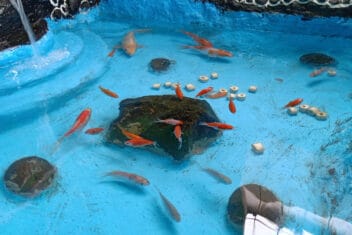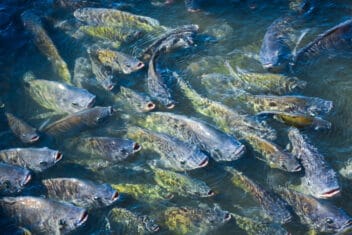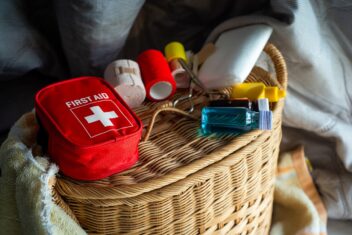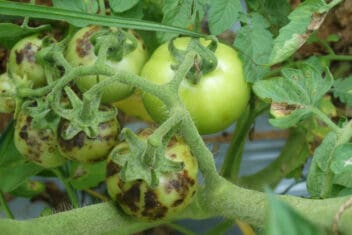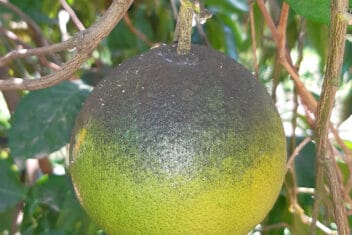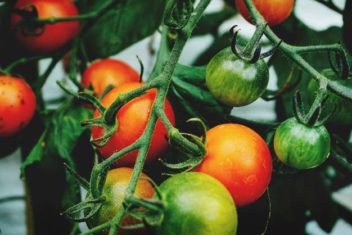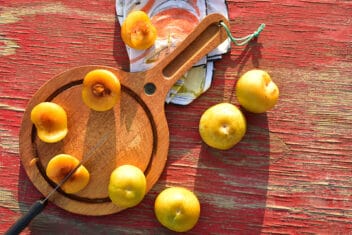Backyard fish farming is a great way to raise healthy protein for you, your family, and to sell at markets. In just a small space, you can raise pounds and pounds of delicious, healthy fish or fish to sell as pets. The trick is to pick the best species of fish for your farming set-up.
If you haven’t yet, check out our comprehensive guide to backyard fish farming. Then, if you’re ready to add fish to your pond, these species are your best bets.
There are three main types of fish that are the most recommended when raising fish in your backyard, but we have a few additional suggestions, as well. Here is what they are and why you should consider them:
1. Koi / Carp
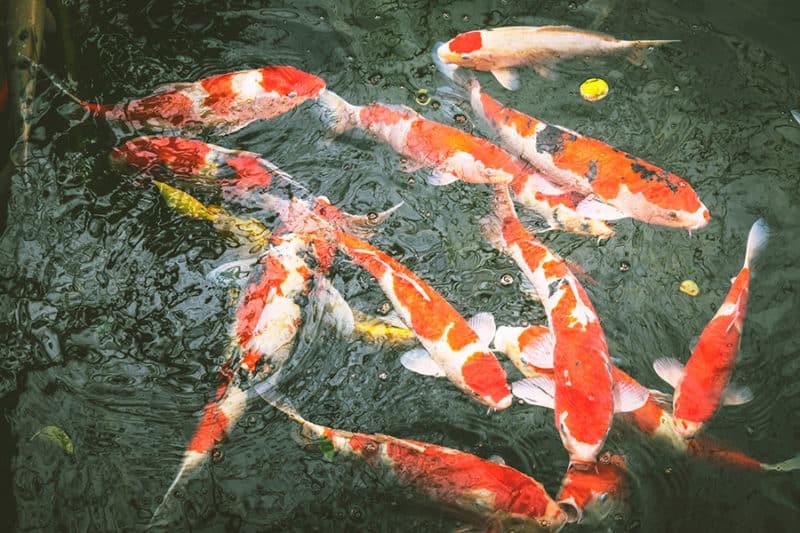
If you’re raising fish to sell as pets, then your best bet would be koi or nishikigoi (brocaded carp). This resilient carp species does well in all manner of both outdoor and indoor environments. Smaller varieties are ideal for indoor freshwater tanks, while some of the larger ones thrive in outdoor koi ponds.
Koi are brightly colored varieties of the Amur carp (Cyprinus rubrofuscus), which are bred specifically for their beauty as ornamental species. In fact, there are dozens of named variations, many of which are prized for their rarity.
If you’re raising fish to sell as pets, you may wish to look into some of the rarer breeds—these will be more sought after by collectors, and will thus bring in more money than standard breeds.
For example, Ōgon (黄金) koi are monochromatic and have a metallic sheen to their scales. They mostly come in platinum, orange, or gold hues, but there’s also a cream-colored variety that’s incredibly rare. One single platinum koi can be sold for $55 to $150 USD, depending on its size.
As an added bonus, koi are also cheap to raise because they can eat store-bought fish food, vegetables, fruits, cereal, and most insects, rather than being limited to specialty diets.
In general, carp need about six months to reach a pound in weight.
2. Tilapia
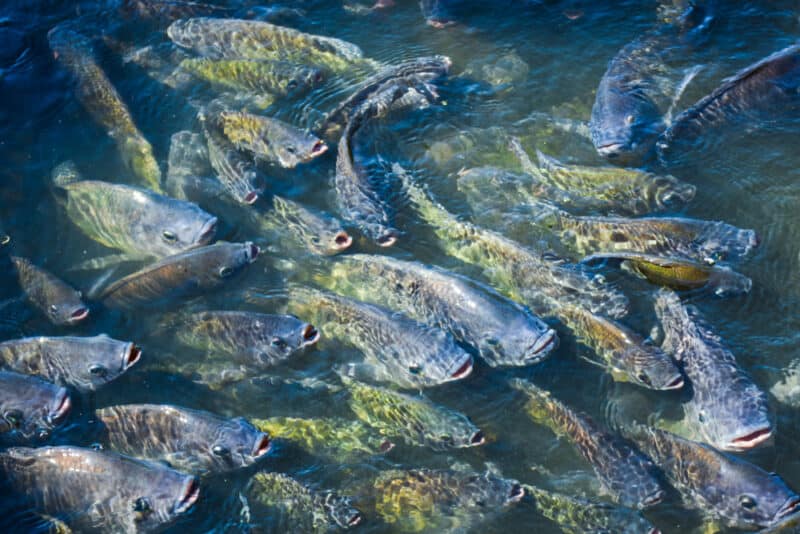
Tilapia is another fish species that you see a lot of people farming in their backyard. They, too, can survive in almost any weather. But they need to be in water that remains at a constant 77-86°F.
If your water temps ever drop below that, then just get a water heater. Once you plug it in, the water will stay warm and your fish should do just fine.
These fish will also thrive in standard city water as well as natural water sources. Note that if you live near the ocean, there may be a higher salt content in your water table. Have it checked to see what its salinity levels are before introducing any fish.
Tilapia can survive as long as the salinity is around 16-20 parts per thousand.
These fish will eat most plant-based foods and insects and will mature in about eight months.
Blue Nile tilapia is a particularly good variety. They’re good-looking, tasty, disease-resistant and can tolerate pretty crappy water quality.
Depending on which kind you raise, tilapia take about 6-18 months to reach one pound.
3. Trout
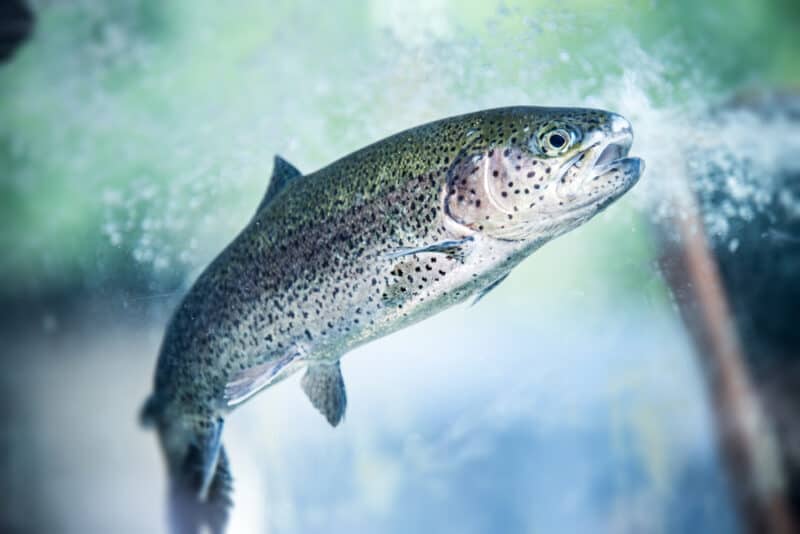
If you know anything about trout, then you’ll know that they’re exceptionally resilient to the cold. In fact, trout species thrive in USDA Growing Zones 6 and below. They can be found in cool lakes, rivers, and streams from California to Kyrgyzstan, and are favored by Canadian, northern US, and northern European fish farmers.
Do some research as to which trout species are indigenous to your area, as well as the environment in which they thrive best. Then try to re-create said environment on your own land. Then contact your local fish farm supply company and ask for recommendations as to which local species to breed.
When it comes to feeding, trout can be a bit picky. They may not fare as well as other species in a self-sustained ecosystem, so keep an eye on them. If they seem small (underweight) or are dying off, then stick to commercial fish food.
It’s also important to note that trout need clean, clear water all the time because they feed by sight. If they can’t see the food around them, then they can’t eat. Feed your trout at dawn and at dusk for maximum food intake.
Trout take about a year to reach one pound.
Other Fish Species to Consider

In addition to those fish mentioned above, catfish and largemouth bass are also great species to raise for food in a farming set-up. They’re quite easy to raise, too. Of course, this is assuming that you’re based in North America.
Catfish have a strong flavor, which some people love and some don’t. Regardless, they take about eight months to reach a pound in weight and they can tolerate crappy water conditions.
Perch also do well in North America. They grow quickly, reaching a pound in about a year and a half, and can tolerate cold water.
Salmon is an extremely popular species for eating and selling at markets, but they can be difficult to raise in a farming set-up. They are even more sensitive than trout to water conditions. Salmon need about a year and a half to reach one pound.
If you love bass, hybrid striped bass is the best one for backyard fish farming. They take a year to reach one pound.
If you’re in Europe, then species such as carp, seabass, or cod might fare better in your area.
If you’re going the pet route, you could also breed goldfish. Some of the larger, more ornamental types can garner a lot of cash on the market.
As a basic rule, it’s best to cultivate species that are indigenous to your area. This goes for fruits, vegetables, herbs, and trees, as well as various animal species. Those that have evolved over thousands of years to thrive in your home environment are going to do far better than an introduced species.
How Many Fish Do You Need?
If you’re just starting out with backyard fish farming, start small with just one or two species at most. The rule of thumb is one pound of fish per five gallons of water. But if you’re new to the process, you should be much more conservative.
Raise no more than 80 to 100 fish for the first few years to test the waters, so to speak.
You’ll undoubtedly lose several fish to illness, injury, and predation as you get the hang of things. As such, keep your endeavor small until you know the ropes. You can always increase their numbers as you go along.
Introducing New Fish
Regardless of the species, before you introduce any new fish to your farming set-up, make sure your system is up and running. If you have existing fish, you should set up a temporary tank to hold the newbies before you add them to the main tank.
This gives you a chance to watch them and make sure the new fish don’t have any diseases or problems. Add a few tablespoons of iodized salt to each gallon of water to kill off any parasites.
Then, over the next week, add a little bit of the water from the main tank into the temporary tank to gradually transition the fish to the conditions they’ll be living in.

